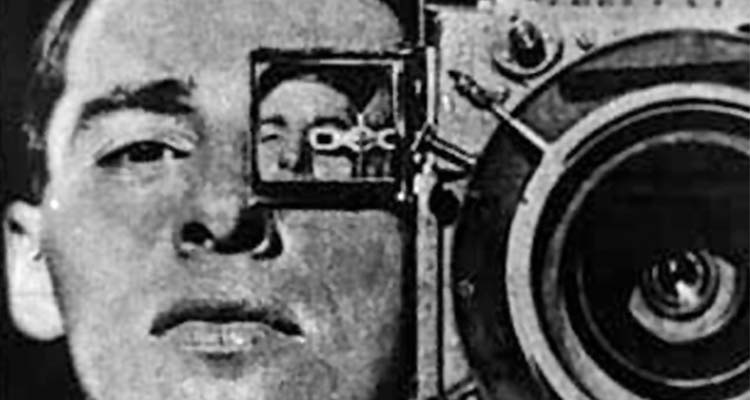Last year’s Milwaukee Film Festival brought us the once-in-a-lifetime event that was Altos: Earth, featuring the local group performing a live, original score to Alexander Dovzhenko’s silent Soviet classic. Cambridge, Massachusetts trio Alloy Orchestra, on the other hand, has been performing live, original scores to accompany old movies for over two decades. This year’s feature was another silent Soviet film: Dziga Vertov’s Man With A Movie Camera, which was recently named the greatest documentary ever made by the British Film Institute’s Sight And Sound magazine. The film has geography and time period in common with Earth, but not much else. There’s no story or concrete agenda to Movie Camera, leaving Alloy Orchestra with the task of creating a narrative arc virtually out of thin air.
The group’s efforts went far beyond just dreaming up 68 minutes of movie music, however. Alloy Orchestra actually got a new print of Movie Camera in the mid ’90s and developed its score based on the director’s own notes. Tuesday night’s performance at the Oriental (the band’s third visit to the MFF) was an impressive blend of synthesized strings and horns, and dynamic percussion that bridged the gap between classic and modern sounds quite well, only occasionally veering into questionable distraction from the film itself.
The film would scarcely fit into the category of “documentary” by modern standards—ironic, given that at the time, Vertov and his comrades preached disdain for all non-documentary forms of filmmaking. The only discernible storyline follows a young woman waking up, getting dressed, and going about her day. These scenes (among others) are clearly staged action, though they make up only a small fraction of the footage. The rest of the film is essentially a hodgepodge of Vertov showing off his own cinematographic wizardry. Reportedly, he shot all of the various scenes individually over the course of three years without any intention of putting them together, eventually setting his wife, Elizaveta Svilova, to the task of editing the footage and making some sense out of it.
The end result is a dizzying array of humanity and machinery, displaying numerous groundbreaking techniques that modern audiences take for granted. The rapid-fire industrial montages and jump-cuts would be enough to give Oliver Stone a headache; the contrasting slow-motion shots of athletes running and leaping about are lovingly composed and breathtaking in their own right. The cumulative effect certainly suggests a humanistic if not downright technophobic theme, but ultimately, the film is a pure celebration of filmmaking itself. The opening and closing scenes within a cinema house, as well as numerous depictions of the cameraman in an almost heroic sense, bring the magic of the art form and its endless possibilities triumphantly to life.
For Alloy Orchestra’s part, it was almost hard to believe that a mere three musicians could create such a powerful sound. The circus-like section during the motorcycle/carousel scenes was particularly captivating, as well as the unnerving, calamitous closing few minutes. There were times when the music was a bit overbearing, such as the urgent piano-based theme that accompanied a woman washing her face, and imbued a shot of a carriage creeping around a cobblestone corner with the intensity of the Ben-Hur chariot race. The ambient crowd noise and trolley clanging seemed inappropriate as part of the “score” to a silent film, as did the modern American emergency sirens that sounded during the depiction of 1920’s Soviet fire trucks rolling down the street. These were minor quibbles, though. This was a rare and unique cinematic experience, and Alloy more than did justice to the film. Few attempts to synthesize historic and modern art are ever this successful.

